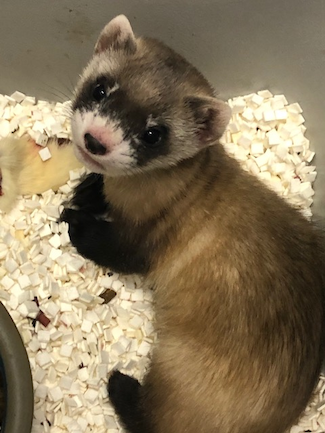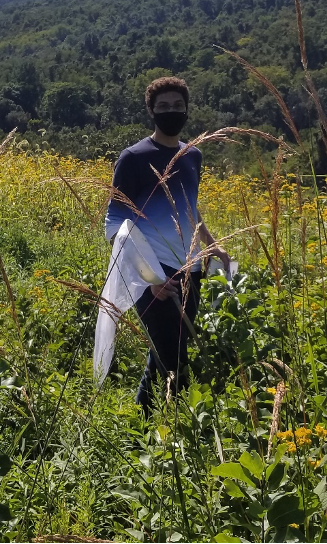Black-footed ferrets were once thought to be extinct, until a small population was discovered in Wyoming in 1981. The species is still endangered, but scientists—including a George Mason University researcher and students at the Smithsonian-Mason School of Conservation (SMSC)—are coming to the rescue.
In December 2020, Willa, a black-footed ferret who died in 1988, was cloned using her cells that had been frozen. That clone, Elizabeth Ann, is now the first North American endangered species to be cloned in the United States. Senior Research Scientist Klaus-Peter Koepfli conducted critical research on her genetic cell line.
“As conservation geneticists, we try to understand how much variation there is and inform conservation breeding best practices,” Koepfli said. “This really is a revolution in terms of how we can use new tools to help endangered species.”
Revive and Restore, the organization that spearheaded the cloning project, sequenced and analyzed the genetic material (or genome) of Willa’s cell cultures. The cell cultures serve as a way to grow and study cells outside their native environment, and are used to help scientists better understand the species’ physiology and biochemistry.
Recognizing Koepfli’s extensive expertise in applying genomics to conservation, the organization asked him and SMSC to further analyze that data, compare it to the previous genome of Willa’s cells, and to other black-footed ferrets.
“What we found is that Willa is contributing variants that we don’t see in any other black-footed ferrets [through Elizabeth Ann],” Koepfli said. “That’s where the cloning is becoming important—if we can clone other cell lines, we can contribute additional new variation to the black-footed ferret population.”
“This research is everything to me,” said senior biology major Marcus Dooley, who assembled the mitogenome of 49 ferrets to compare genetic differences within their sequences. “Being able to live my childhood dream by helping support an endangered species is priceless.”
In the future, the genomic data could potentially be used for other conservation efforts, Koepfli said, such as understanding and minimizing the presence of damaging genetic mutations, and even reengineering a species’ immune system to become resistant to deadly diseases.
“That sounds like blue-sky thinking, but with gene-editing technology and the tools we have today, it’s in the realm of possibility,” Koepfli said. “There’s still a lot of research that needs to be done to understand this, and we’re trying to help with our genome analysis program.”
Koepfli said he began working with black-footed ferrets in 2017, and started the genomic analysis program when he worked at the Smithsonian Conservation Biology Institute. He’s since brought the program to SMSC, where students can be part of this research that helps save endangered species.
Dooley, who attended SMSC in Fall 2020, said he plans to pursue a career in conservation. He feels Mason’s program is setting him up for success.
“The best part is how immersive the [SMSC] courses are,” Dooley said. “Everything you learn is applicable to the conservation profession and you are constantly out in the field performing hands-on activities to help prepare you for that line of work.”
He adds: “If you’re passionate about the environment and conservation, and truly want to pursue a career in this field, SMSC is the best option.”



